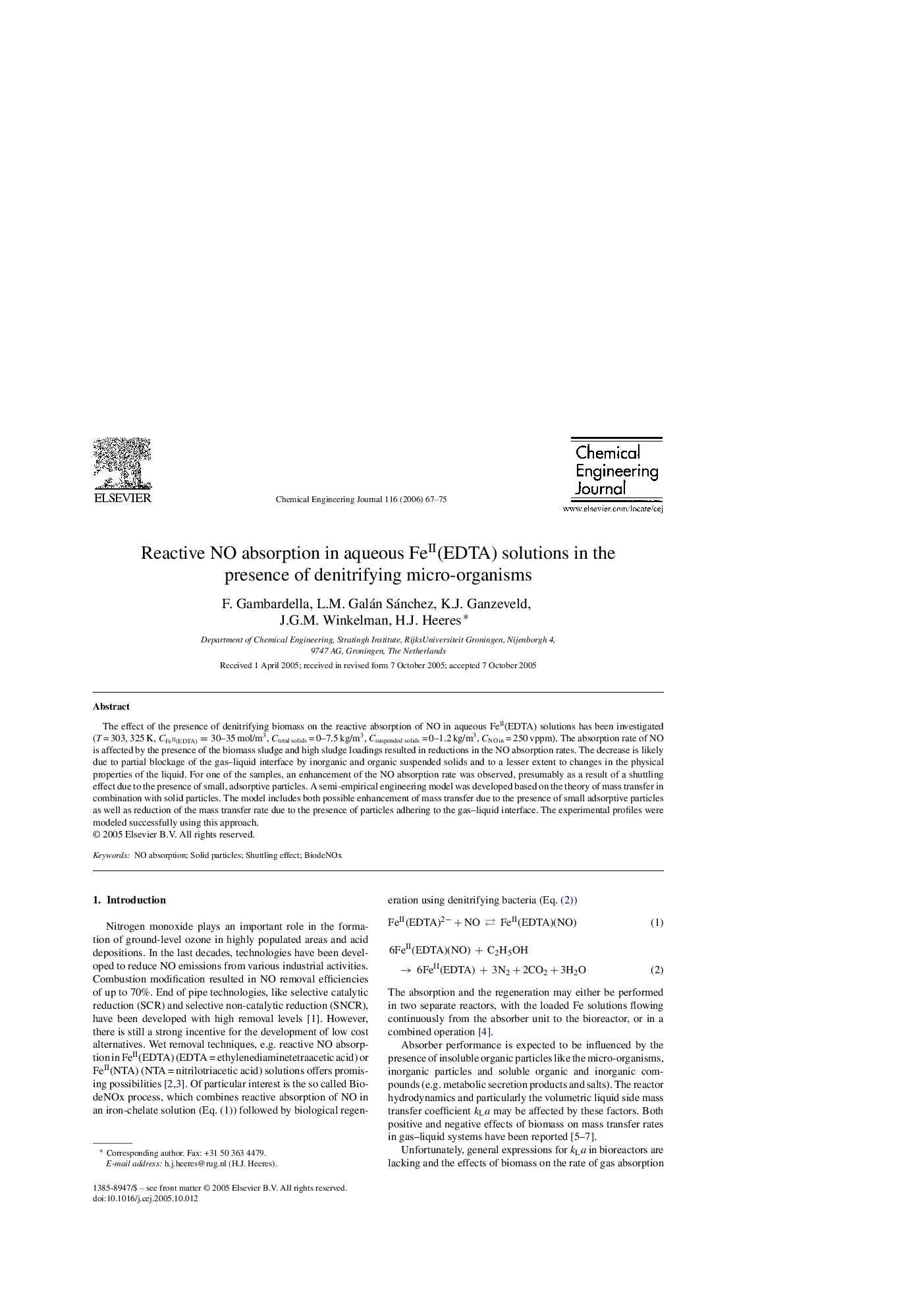| Article ID | Journal | Published Year | Pages | File Type |
|---|---|---|---|---|
| 154329 | Chemical Engineering Journal | 2006 | 9 Pages |
The effect of the presence of denitrifying biomass on the reactive absorption of NO in aqueous FeII(EDTA) solutions has been investigated (T = 303, 325 K, CFeII(EDTA)=30–35CFeII(EDTA)=30–35 mol/m3, Ctotal solids = 0–7.5 kg/m3, Csuspended solids = 0–1.2 kg/m3, CNO in = 250 vppm). The absorption rate of NO is affected by the presence of the biomass sludge and high sludge loadings resulted in reductions in the NO absorption rates. The decrease is likely due to partial blockage of the gas–liquid interface by inorganic and organic suspended solids and to a lesser extent to changes in the physical properties of the liquid. For one of the samples, an enhancement of the NO absorption rate was observed, presumably as a result of a shuttling effect due to the presence of small, adsorptive particles. A semi-empirical engineering model was developed based on the theory of mass transfer in combination with solid particles. The model includes both possible enhancement of mass transfer due to the presence of small adsorptive particles as well as reduction of the mass transfer rate due to the presence of particles adhering to the gas–liquid interface. The experimental profiles were modeled successfully using this approach.
